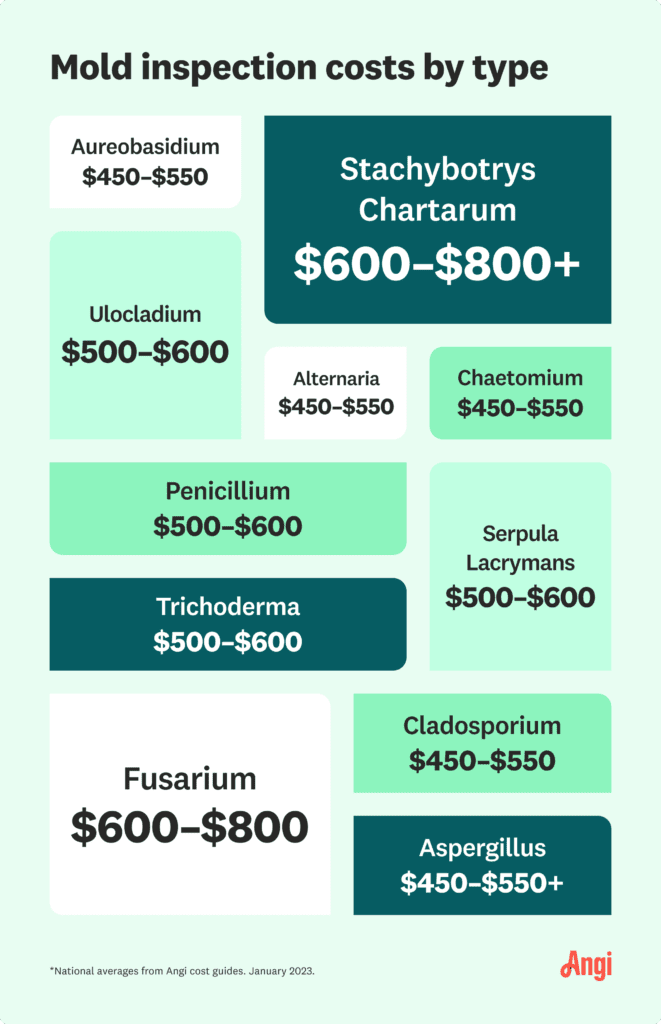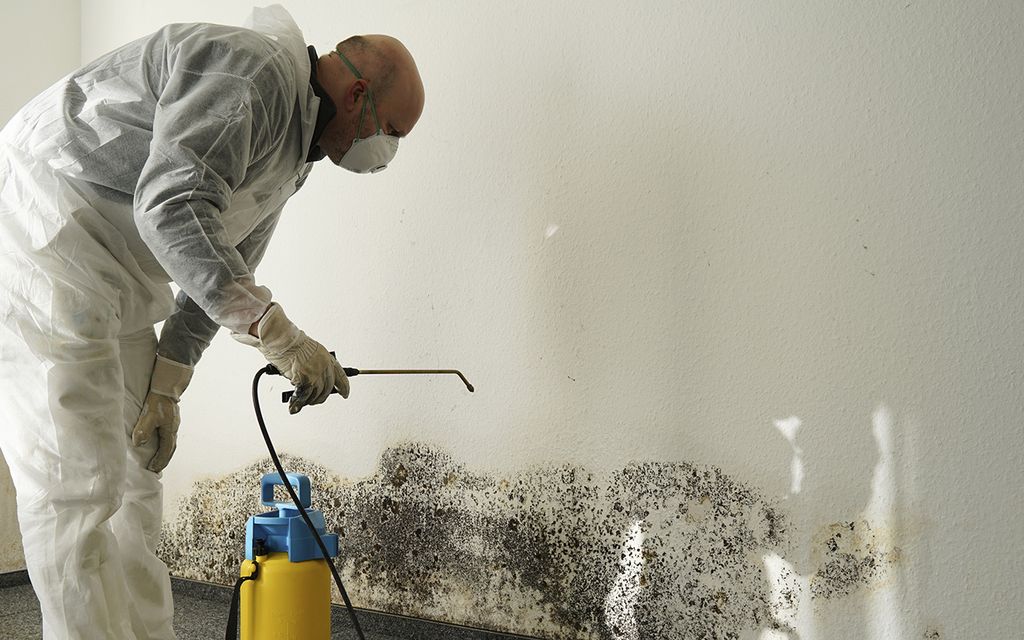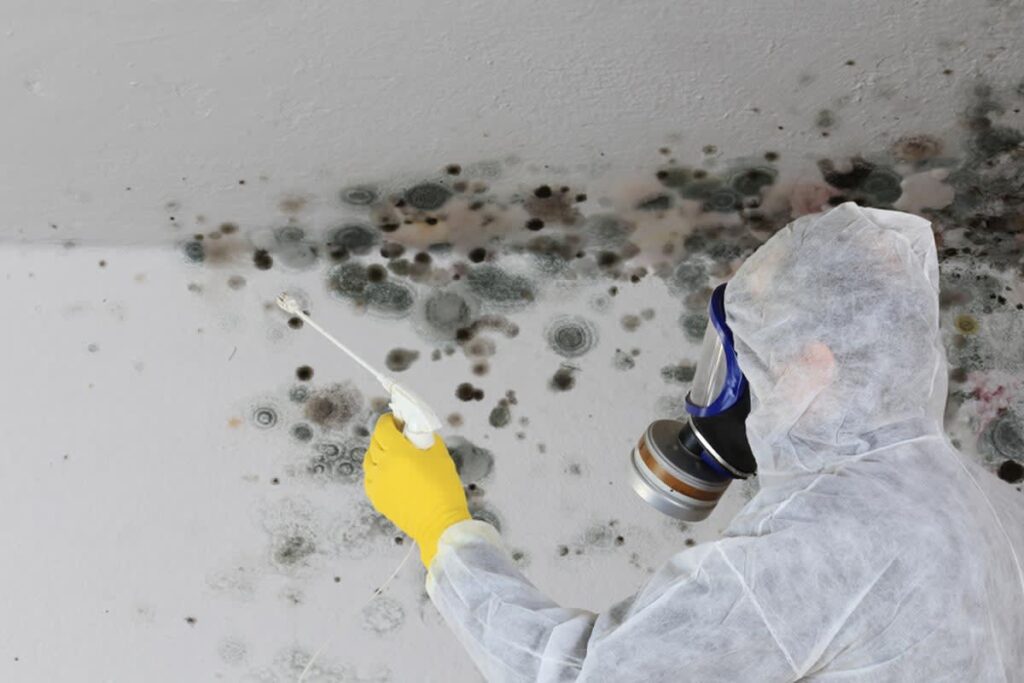Are you curious about the cost of mold inspection? Mold can be a serious issue that poses risks to your health and the structural integrity of your home. In this article, we will explore the expenses associated with mold inspection services. By understanding the average costs involved, you can make an informed decision and ensure the well-being of your living space. So without further ado, let’s jump right in and discover how much mold inspection might cost you.
Factors Affecting the Cost of Mold Inspection
Size of the Property
The size of your property is one of the key factors that can affect the cost of mold inspection. Larger properties generally require more time and resources to thoroughly inspect for mold growth. As a result, you can expect the cost of mold inspection to be higher for larger properties compared to smaller ones.
Extent of the Mold Growth
The extent of mold growth in your property is another important factor that can impact the cost of inspection. If the mold growth is limited to a small area, the inspection process may be quicker and less expensive. However, if the mold has spread extensively throughout the property, it will require a more thorough inspection, increasing the overall cost.
Accessibility and Severity of Mold Infestation
The accessibility and severity of the mold infestation can also influence the cost of mold inspection. If the mold is easily accessible and visible, the inspection process may be simpler and less time-consuming, resulting in lower costs. However, if the mold is hidden behind walls or in hard-to-reach areas, it may require additional tools and techniques for proper inspection, thereby increasing the overall cost.
Location of the Property
The location of your property can also play a role in determining the cost of mold inspection. The cost of living and business operations can vary from one region to another, which can impact the pricing of mold inspection services. In some areas, where the demand for mold inspection is higher, the cost may be slightly higher compared to regions with lower demand.
Type of Property
The type of property you own, whether it’s a residential, commercial, or industrial property, can also influence the cost of mold inspection. Different types of properties have varying complexities and specific requirements for mold inspection. Commercial and industrial properties may require more in-depth inspections due to their size and unique characteristics, which can result in higher costs compared to residential properties.
Cost Comparison of Different Mold Inspection Methods
Visual Inspection
Visual inspection is one of the most common methods used to identify mold growth. This involves a thorough visual assessment of the property, looking for visible signs of mold, such as discoloration, water damage, or moldy odors. Visual inspection is generally the least expensive method, as it does not involve any special tools or sampling.
Surface Sampling
Surface sampling involves collecting samples from surfaces suspected of mold growth, such as walls, ceilings, or furniture. These samples are then sent to a laboratory for analysis to determine the presence and type of mold. Surface sampling can provide more accurate results than visual inspection and is typically more expensive due to the additional cost of laboratory analysis.
Air Testing
Air testing is another method used to assess the air quality and detect airborne mold spores. This involves collecting air samples using specialized equipment and analyzing them in a laboratory. Air testing can provide valuable information about the presence and concentration of mold spores in the indoor environment. However, it is generally more expensive than visual inspection or surface sampling due to the laboratory analysis required.
Bulk Sampling
Bulk sampling involves collecting physical samples of materials suspected of mold growth, such as drywall or carpet. These samples are then sent to a laboratory for analysis. Bulk sampling can provide detailed information about the composition and concentration of mold in specific materials. It is typically more expensive than surface sampling or visual inspection due to the cost of laboratory analysis and the additional effort required for sample collection.
Infrared Thermography
Infrared thermography is a non-invasive method used to detect moisture and temperature variations that can indicate potential areas of mold growth. This method uses thermal imaging cameras to identify hidden moisture sources and potential mold-infested areas. Infrared thermography can be more costly than other methods, as it requires specialized equipment and expertise to interpret the thermal images accurately.

Cost Breakdown of Mold Inspection Services
Cost of Initial Inspection
The cost of the initial inspection typically includes the assessment of your property for any visible signs of mold growth and potential moisture issues. This cost may vary depending on the size of the property, the extent of the inspection, and the chosen inspection method.
Cost of Additional Testing
If the initial inspection raises concerns or if you require more detailed information regarding the mold infestation, additional testing may be recommended. This can include surface sampling, air testing, or bulk sampling, depending on the specific requirements of your property. The cost of additional testing will depend on the type and number of tests conducted.
Cost of Remediation Plan
If mold is detected during the inspection, a remediation plan may be necessary to remove the mold and prevent further growth. The cost of developing a remediation plan will depend on factors such as the severity of the mold infestation, the size of the affected area, and the complexity of remediation required.
Cost of Post-Remediation Verification
After the remediation is complete, post-remediation verification may be conducted to ensure that the mold has been effectively removed and the property is safe for occupancy. This verification typically involves additional testing to confirm the absence of mold. The cost of post-remediation verification will vary depending on the extent of testing required and the chosen method.
Average Costs of Professional Mold Inspection
National Average
The average cost of professional mold inspection in the United States ranges from $300 to $600. This cost includes the initial inspection and may vary depending on the factors mentioned earlier, such as property size, extent of mold growth, and location.
Cost Range Variation by Region
The cost of mold inspection can vary from one region to another due to differences in the cost of living and demand for services. In areas with a higher cost of living or higher demand for mold inspection, the average costs may be slightly higher than the national average. Conversely, in areas with lower demand or a lower cost of living, the average costs may be lower.
Additional Costs to Consider
In addition to the cost of mold inspection, there may be additional costs to consider depending on the specific needs of your property. These costs can include remediation costs, costs for any necessary repairs or renovations, and ongoing maintenance to prevent future mold growth. It’s important to factor in these additional costs when budgeting for mold inspection.

Cost-Saving Tips for Mold Inspection
Research and Compare Quotes
To ensure you get the best value for your money, it’s recommended to research and compare quotes from different mold inspection companies. While price is an important factor, make sure to also consider the reputation, qualifications, and expertise of the inspectors to ensure you’re getting a comprehensive and reliable inspection.
Consider DIY Mold Testing Kits
If you’re on a tight budget, you can consider using DIY mold testing kits. These kits typically involve collecting samples yourself and sending them to a laboratory for analysis. While DIY kits can be more cost-effective, it’s important to note that professional mold inspectors have the expertise and experience to accurately identify mold and assess its severity, which may be challenging with DIY kits.
Address Mold Issues Early
Addressing mold issues as soon as they are identified can help prevent further damage and potentially reduce the overall cost of mold inspection and remediation. By taking prompt action, you can prevent the mold from spreading and minimize the need for extensive testing and remediation.
Maintain Good Indoor Air Quality
Maintaining good indoor air quality can help prevent mold growth and reduce the need for frequent mold inspections. Some ways to improve indoor air quality include proper ventilation, controlling humidity levels, fixing leakages promptly, and regularly cleaning and maintaining your property.
Importance of Professional Mold Inspection
Early Detection of Mold Issues
Professional mold inspection plays a crucial role in the early detection of mold issues. Mold growth can often go unnoticed, especially if it’s hidden behind walls or in less-visible areas. By hiring a professional mold inspector, you can identify and address mold problems before they escalate and cause significant damage to your property.
Accurate Assessment of Mold Severity
Professional mold inspectors have the knowledge and experience to accurately assess the severity of mold infestations. They can identify the type of mold present, determine the extent of the growth, and evaluate potential health risks associated with the mold. This information is vital for developing an effective remediation plan and ensuring the safety of occupants.
Identification of Hidden Mold Sources
Mold can thrive in hidden areas, such as wall cavities or under flooring. Professional mold inspectors are trained to identify these hidden mold sources using specialized tools and techniques. By detecting and addressing these hidden sources, a thorough inspection can prevent mold from recurring after remediation.
Expert Guidance for Effective Remediation
When mold is detected, it’s important to have a well-executed remediation plan to eliminate the mold and prevent its return. Professional mold inspectors can provide expert guidance and recommendations for effective remediation strategies. They can also refer you to reputable remediation companies and ensure that the remediation process meets industry standards and guidelines.

Potential Health Risks Associated with Mold Exposure
Respiratory Issues
Exposure to mold spores can trigger respiratory issues, especially among individuals with pre-existing respiratory conditions such as asthma or allergies. Symptoms may include coughing, wheezing, shortness of breath, chest tightness, and nasal congestion.
Allergic Reactions
Mold allergies are common and can cause allergic reactions, including sneezing, runny or stuffy nose, itchy or watery eyes, and skin rash. Allergic reactions vary from person to person, with some individuals experiencing mild symptoms while others may have severe reactions.
Skin Irritation
Direct contact with mold or its spores can result in skin irritation. This can manifest as redness, itchiness, or a rash, particularly in individuals with sensitive skin. It’s important to avoid direct contact with mold and use protective measures when handling or cleaning affected areas.
Headaches and Fatigue
Exposure to mold indoors can lead to headaches and fatigue. These symptoms can be debilitating and affect your daily routine. If you notice these symptoms consistently while inside your property and they improve when you are away, it might be an indication of mold-related health issues.
Worsening of Asthma Symptoms
For individuals with asthma, exposure to mold can exacerbate their asthma symptoms. Mold spores can trigger asthma attacks, causing coughing, wheezing, chest tightness, and difficulty breathing. Proper mold inspection and timely remediation can help mitigate these health risks.
DIY Mold Inspection vs. Professional Mold Inspection
Benefits and Limitations of DIY Mold Inspection
DIY mold inspection can be cost-effective, especially if you are experienced and knowledgeable about mold growth and its detection. It allows you to take immediate action when you suspect mold in your property. However, DIY inspections may lack the expertise and resources provided by professional inspectors, potentially resulting in inaccurate assessments or missed hidden mold sources.
Advantages of Hiring Professional Mold Inspectors
Hiring professional mold inspectors offers several advantages. They have the necessary training, tools, and experience to conduct thorough inspections and accurately identify mold issues. Professional inspectors can provide reliable and detailed mold reports, recommend appropriate remediation strategies, and ensure compliance with industry standards. Their expertise can save you time, effort, and potential health risks associated with inadequate mold inspections.

Choosing a Qualified and Certified Mold Inspector
Credentials and Training
When selecting a mold inspector, it’s important to consider their credentials and training. Look for inspectors who hold certifications from reputable organizations such as the National Association of Mold Inspectors (NAMI) or the Indoor Air Quality Association (IAQA). These certifications indicate that the inspector has undergone rigorous training and follows industry best practices.
Experience and Expertise
Experience is a valuable factor when choosing a mold inspector. Experienced inspectors have encountered a wide range of mold scenarios and can effectively assess different types of properties. They have the knowledge to identify potential problem areas and hidden mold sources. Research the inspector’s background, years of experience, and their specialization in mold inspection.
References and Reviews
Checking references and online reviews can give you insights into the quality of service offered by a mold inspector. Reach out to previous clients and ask about their experiences working with the inspector. Read online reviews from trusted sources to gather feedback and determine if the mold inspector has a good reputation for providing reliable and thorough inspections.
Insurance Coverage
It’s essential to ensure that the mold inspector you hire has proper liability insurance coverage. This coverage protects both you and the inspector in case of any damages or errors during the inspection process. A reputable and professional mold inspector will have liability insurance and be willing to provide proof upon request.
Understanding Mold Inspection Reports
Components of a Mold Inspection Report
A mold inspection report typically includes various components to provide a comprehensive overview of the inspection findings. These components may include the inspector’s observations, descriptions of visible mold growth, locations of moisture sources, and any damage caused by the mold. The report may also include laboratory results, recommendations for remediation, and guidelines to prevent future mold growth.
Interpretation of Laboratory Results
If laboratory testing was conducted as part of the mold inspection, the report may include the interpretation of the laboratory results. This interpretation helps to identify the type and concentration of mold present in the samples collected. The report may also highlight any potential health risks associated with specific types of mold found in the property.
Recommendations and Remediation Guidelines
A mold inspection report often includes recommendations for remediation based on the severity of the mold infestation. These recommendations may outline the steps and strategies to effectively remove the mold, prevent its recurrence, and improve indoor air quality. The report may also provide guidelines for maintaining a mold-free environment and preventing future mold growth.
In conclusion, the cost of mold inspection can vary depending on factors such as property size, extent of mold growth, accessibility, location, and property type. Different mold inspection methods, including visual inspection, surface sampling, air testing, bulk sampling, and infrared thermography, have varying costs and purposes. Understanding the cost breakdown, average costs, and potential health risks associated with mold exposure can help you make informed decisions about professional mold inspections. Additionally, considering cost-saving tips, the importance of professional inspections, and the qualifications of mold inspectors can ensure a thorough inspection and reliable mold inspection report.
